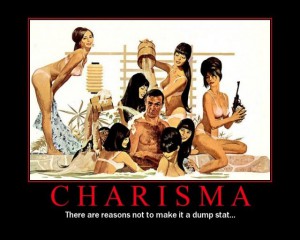The Iron Kingdoms game I’m currently playing in is winding down, and with the launch of the new edition, it’s looking likely that I’ll end up in a D&D game soon. As always, the question becomes what to play. Since getting the book last week, I’ve been tossing a few things around. Since I happen to know that I’m going to be rolling stats for this character, what I play may depend on what stats I end up with.
The Default Choice
Now that there are a lot more animals to pick from, my default choice (a Druid focusing on shapeshifting) seems like a good option. The playtest druid encouraged focusing on martial stats, and wild shape provided a bonus to them (like in Pathfinder). The final druid lets wild shape replace your physical stats (like 3.5) but also adds the shape’s HP on top of your own. (To make up for this, most forms have fairly low AC.) I don’t know what race I’d use for this; Elf would be the obvious choice but I avoid playing elves whenever possible. Given the druid ability to mostly ignore physical stats, I’ll probably end up here if my rolls are particularly low.
The Bad Idea
I went over this one with a friend yesterday, but it would be entertaining to play a dragonborn (black dragon heritage) warlock for maximum bad ideas (also works with Half-Orc). I tend to avoid playing squishy arcane casters, but warlocks have a few options to help them stay alive and with blade pact at level 3, the ability to mix it up in melee themselves. This probably works better with a DEX-based character, but STR seems like it would be more fun. I haven’t played the big guy in the party in a while. It would take a lot of stats to make this work, however.
The New Toy
Paladins have 3 class options available to them. Oath of Devotion is similar to the traditional paladin, (with Flame Strike thrown in as a bonus spell for good measure). Oath of Vengeance is similar to the 4e avenger, and it’s a bit less supporty than the other options. The option I would play is Oath of the Ancients, which has a bit of the 4e Warden, making the paladin a bit less “holy warrior” and a bit more “defender of nature”. This gives it some spells from the druid spell list (including my new favorite, Moonbeam) and changed abilities (Channel Divinity allows you to turn fey instead of undead, for example). I like having a paladin that has “removed the stick”, so this might be an interesting thing to try.
All of these have a bit of magic and a lot of beatdown, so I guess that’s the sort of character I’ll be playing in whatever comes next. I expect some of my time is going to go into developing backgrounds for these characters, whether they see play or not.
For more posts about… everything, check out the Blaugust Initiative. Two posts today to make up for the lack of one yesterday: Maevrim starts to write about her 15 games, and Thalen talks about what he wants out of the new Sierra.

